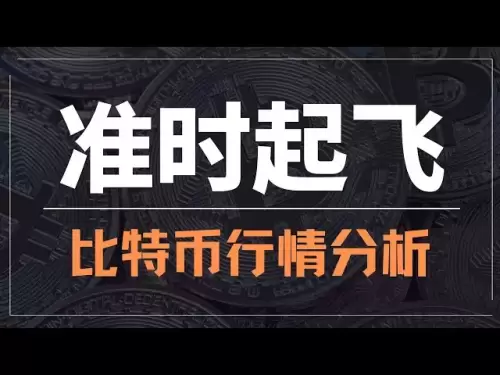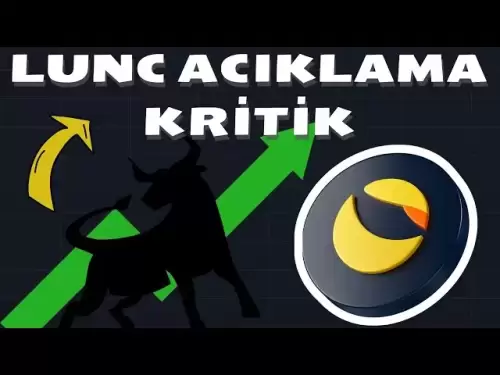-
 Bitcoin
Bitcoin $116400
0.87% -
 Ethereum
Ethereum $3819
3.86% -
 XRP
XRP $3.048
1.62% -
 Tether USDt
Tether USDt $1.000
0.03% -
 BNB
BNB $777.2
0.60% -
 Solana
Solana $169.3
0.46% -
 USDC
USDC $0.0000
0.02% -
 TRON
TRON $0.3414
2.06% -
 Dogecoin
Dogecoin $0.2126
3.33% -
 Cardano
Cardano $0.7527
1.21% -
 Hyperliquid
Hyperliquid $38.86
1.02% -
 Sui
Sui $3.683
5.27% -
 Stellar
Stellar $0.4048
1.45% -
 Chainlink
Chainlink $17.91
6.62% -
 Bitcoin Cash
Bitcoin Cash $576.9
1.29% -
 Hedera
Hedera $0.2487
1.03% -
 Ethena USDe
Ethena USDe $1.001
-0.01% -
 Avalanche
Avalanche $22.46
1.07% -
 Litecoin
Litecoin $120.8
1.69% -
 UNUS SED LEO
UNUS SED LEO $8.963
-0.30% -
 Toncoin
Toncoin $3.301
2.33% -
 Shiba Inu
Shiba Inu $0.00001250
1.13% -
 Uniswap
Uniswap $10.06
3.45% -
 Polkadot
Polkadot $3.731
1.56% -
 Dai
Dai $1.000
0.01% -
 Bitget Token
Bitget Token $4.416
1.58% -
 Cronos
Cronos $0.1482
3.73% -
 Monero
Monero $250.0
-12.34% -
 Pepe
Pepe $0.00001075
2.16% -
 Aave
Aave $274.6
4.17%
How to buy Ripple (XRP): A quick 5-minute guide
To buy Ripple (XRP), choose a reliable exchange like Binance or Coinbase, deposit funds, place a market or limit order, and consider transferring XRP to a secure wallet for safety.
Apr 11, 2025 at 01:35 am

How to buy Ripple (XRP): A quick 5-minute guide
Purchasing Ripple (XRP) can be a straightforward process if you follow the right steps. This guide will walk you through the process of buying XRP in just five minutes. Whether you're a seasoned crypto investor or a newcomer, this guide will help you navigate the process with ease.
Choosing a Reliable Exchange
The first step in buying Ripple (XRP) is to choose a reliable cryptocurrency exchange. Some popular exchanges that support XRP include Binance, Coinbase, and Kraken. It's important to select an exchange that is reputable, secure, and offers XRP trading pairs.
- Visit the website of your chosen exchange.
- Sign up for an account by providing your email address and creating a strong password.
- Complete the verification process, which may require you to submit personal identification documents.
Depositing Funds
Once your account is set up and verified, you'll need to deposit funds into your exchange account. Most exchanges accept deposits via bank transfer, credit/debit card, or other cryptocurrencies.
- Navigate to the deposit section of the exchange.
- Choose your preferred deposit method and follow the instructions provided.
- Wait for the funds to be credited to your exchange account, which can take anywhere from a few minutes to several days, depending on the method used.
Placing an Order for XRP
With funds in your exchange account, you're ready to buy XRP. Exchanges typically offer two types of orders: market orders and limit orders.
- Market orders allow you to buy XRP at the current market price.
- Limit orders allow you to set a specific price at which you want to buy XRP.
To place an order:
- Navigate to the trading section of the exchange.
- Select the XRP trading pair (e.g., XRP/USDT or XRP/BTC).
- Choose the type of order you want to place (market or limit).
- Enter the amount of XRP you want to buy.
- Review your order and click the "Buy" button to execute it.
Withdrawing XRP to a Wallet
After purchasing XRP, it's a good idea to transfer your coins to a secure wallet. Holding your XRP in a personal wallet gives you more control over your funds and enhances security.
- Choose a wallet that supports XRP, such as the official Ripple wallet or a hardware wallet like Ledger.
- Set up your wallet according to the provider's instructions.
- Generate a new XRP address in your wallet.
- Return to the exchange and navigate to the withdrawal section.
- Enter the XRP address you generated in your wallet.
- Specify the amount of XRP you want to withdraw.
- Confirm the withdrawal and wait for the transaction to be processed, which can take a few minutes.
Monitoring Your Investment
Once you've bought and secured your XRP, it's important to keep an eye on your investment. Use the exchange's trading interface or a third-party platform to track the price of XRP and stay informed about market trends.
- Set up price alerts to notify you of significant price movements.
- Regularly review your investment strategy and adjust as needed based on market conditions.
Understanding the Risks
Investing in cryptocurrencies like XRP comes with risks. It's crucial to understand these risks before investing. The value of XRP can be highly volatile, and there's always the potential for loss. Additionally, regulatory changes can impact the availability and value of XRP.
- Educate yourself about the cryptocurrency market and the specific factors that can affect XRP's price.
- Only invest what you can afford to lose.
- Diversify your portfolio to mitigate risk.
Frequently Asked Questions:
Q: Can I buy XRP directly with USD on all exchanges?
A: Not all exchanges support direct purchases of XRP with USD. Some exchanges may require you to first buy a different cryptocurrency like Bitcoin or Ethereum and then trade it for XRP. Always check the trading pairs available on your chosen exchange.
Q: How long does it take to buy XRP?
A: The time it takes to buy XRP can vary depending on several factors, including the speed of your deposit method and the exchange's processing times. Generally, once your funds are available in your exchange account, buying XRP can be done in a matter of minutes.
Q: Is it safe to store XRP on an exchange?
A: While many exchanges have robust security measures in place, storing your XRP on an exchange long-term is generally not recommended. Exchanges can be vulnerable to hacks and other security breaches. It's safer to transfer your XRP to a personal wallet where you have full control over your private keys.
Q: What fees should I expect when buying XRP?
A: Fees can vary depending on the exchange and the method of purchase. Common fees include trading fees, withdrawal fees, and deposit fees. Always review the fee structure of your chosen exchange before making a purchase.
Disclaimer:info@kdj.com
The information provided is not trading advice. kdj.com does not assume any responsibility for any investments made based on the information provided in this article. Cryptocurrencies are highly volatile and it is highly recommended that you invest with caution after thorough research!
If you believe that the content used on this website infringes your copyright, please contact us immediately (info@kdj.com) and we will delete it promptly.
- Pi Coin's dApp and AI Potential: Building a Decentralized Future
- 2025-08-08 02:30:12
- Bitcoin, Greenidge, and Liquidity: Navigating the Crypto Currents in NYC
- 2025-08-08 02:30:12
- Crypto Phishing Alert: $3 Million USDT Loss Highlights DeFi Risks
- 2025-08-08 01:10:12
- Crypto Presale Mania: Is Punisher Coin the High ROI King?
- 2025-08-08 01:10:12
- Online Betting, Platforms & Crypto Access: What's Hot in 2025
- 2025-08-08 00:50:12
- Layer Brett: The Meme Coin Primed for 100x Gains?
- 2025-08-08 01:50:12
Related knowledge

How to avoid common crypto investment mistakes?
Jul 13,2025 at 01:35am
Understanding the Risks of Crypto InvestmentInvesting in cryptocurrency can be highly rewarding, but it also comes with significant risks. One of the ...

What is a long-short crypto strategy?
Jul 15,2025 at 10:56am
Understanding the Basics of a Long-Short Crypto StrategyA long-short crypto strategy is an investment approach where traders simultaneously take long ...

What is a long-short crypto strategy?
Jul 11,2025 at 01:28pm
Understanding the Basics of Long-Short Crypto StrategyA long-short crypto strategy is an investment approach where traders take both long and short po...

How to use the RSI indicator for crypto?
Jul 12,2025 at 03:56pm
Understanding the RSI Indicator in Cryptocurrency TradingThe Relative Strength Index (RSI) is a momentum oscillator used to measure the speed and chan...

Is copy trading a good strategy for crypto beginners?
Jul 12,2025 at 08:28am
Understanding Copy Trading in the Cryptocurrency MarketCopy trading is a strategy where novice traders replicate the trades of experienced investors a...

How to build a crypto portfolio with $1000?
Jul 13,2025 at 08:14pm
Understanding the Basics of Cryptocurrency InvestmentBuilding a crypto portfolio with $1000 starts with understanding the fundamentals of cryptocurren...

How to avoid common crypto investment mistakes?
Jul 13,2025 at 01:35am
Understanding the Risks of Crypto InvestmentInvesting in cryptocurrency can be highly rewarding, but it also comes with significant risks. One of the ...

What is a long-short crypto strategy?
Jul 15,2025 at 10:56am
Understanding the Basics of a Long-Short Crypto StrategyA long-short crypto strategy is an investment approach where traders simultaneously take long ...

What is a long-short crypto strategy?
Jul 11,2025 at 01:28pm
Understanding the Basics of Long-Short Crypto StrategyA long-short crypto strategy is an investment approach where traders take both long and short po...

How to use the RSI indicator for crypto?
Jul 12,2025 at 03:56pm
Understanding the RSI Indicator in Cryptocurrency TradingThe Relative Strength Index (RSI) is a momentum oscillator used to measure the speed and chan...

Is copy trading a good strategy for crypto beginners?
Jul 12,2025 at 08:28am
Understanding Copy Trading in the Cryptocurrency MarketCopy trading is a strategy where novice traders replicate the trades of experienced investors a...

How to build a crypto portfolio with $1000?
Jul 13,2025 at 08:14pm
Understanding the Basics of Cryptocurrency InvestmentBuilding a crypto portfolio with $1000 starts with understanding the fundamentals of cryptocurren...
See all articles

























































































